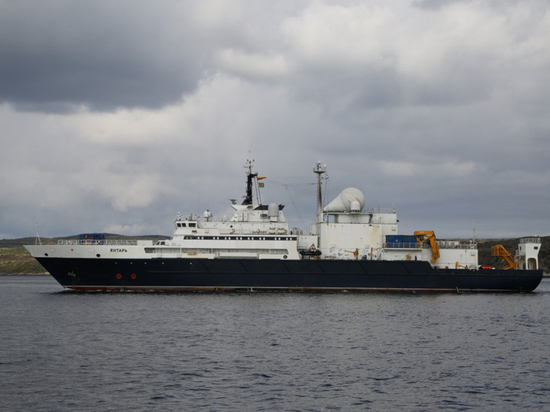Oceanographic vessel from Russia harasses the West
A Russian “spy ship” capable of launching small deep-sea submarines, British tabloids, was alerted in the English Channel. This is the oceanographic research ship Yantar.

Photo: Mil .ru.
According to the Daily Mirror, the ship “Amber” was spotted Monday morning entering British territorial waters and was located south of Plymouth and moving north at about 11:20.
The ship, writes the British media, is called a specialized “research vessel”, which is usually assumed to be involved in underwater research.
The 108-meter vessel carries several deep-sea submarines and underwater “robots” that can photograph and move objects along the seabed.
According to British newspapers, it was spotted after the ship turned on an automatic information system, which made it visible on the MarineTraffic.com vessel monitoring website.
MailOnline states that the vessel is often located on a surface near critical infrastructure such as Internet cables.
The “Yantar” is called the “special purpose ship” and the “oceanographic ship,” but according to Western media, it is believed to be involved in international espionage. According to the British press, “his mission is launching Russia's secret submarine research headquarters, which is also planning raids by” special “Kremlin submarines or” spy “submarines,” NavalNews said.
Among the submarines on board is a submarine with a crew of AS-37, which can dive to a depth of 6000 meters from sea level.
At the stern of the ship are two frames that can launch small submersible and remote-controlled vehicles, commonly referred to as “underwater robots”, capable of catching, moving or placing objects in the sea.
An investigation was launched last year to determine whether a Russian deep-sea vessel was carrying out unauthorized cable work off the south coast of Ireland, the Times reported. The Naval Patrol saw a large underwater reconnaissance ship next to an Internet cable carrying traffic between Europe and America. The vessel was located 170 nautical miles off the coast of Ireland, which is considered to be the country's exclusive economic zone.
As it recalls
https://www.dailymail.co. uk/news/article- 9985185/Russian-spy-ship-English-Channel.html
Daily Mail, October 18, 2016 A Syrian telecommunications company has ordered emergency work to repair a cable in the Mediterranean that provides Internet connections in several countries, including Syria, Libya and Lebanon. Yantar arrived in the area the day before the four-day renovation.
In the next episode on November 5, 2016, the submarine cable connecting the countries of the Persian Gulf in Iran was disconnected. A few hours later, according to the British edition, “Yantar” left Oman and headed to an area about 60 miles west of the Iranian port city of Bushehr, where the cable reaches the shore. Communication was resumed just hours before Yantaru arrived on November 9.
Submarine cables have been the target of military operations in the past, according to the Daily Mail.
At the beginning of the First World War, Great Britain cut several German communication cables. During the Cold War, the US Navy sent American divers deep into the Sea of Okhotsk off the coast of the USSR to install a device for recording Soviet reports in the hope that they would learn more about the USSR's nuclear capabilities launched from submarines.
According to documents published by Edward Snowden, the British and American intelligence services last tapped on fiber optic cables.
In 2007, Vietnamese authorities confiscated ships carrying several kilometers of fiber-optic cables that thieves mined at sea to retrieve them. The robbery cut off communications for several months. And in 2013, Egyptian authorities arrested three divers near Alexandria for trying to cut a cable from France to Singapore. Five years later, questions remain about the cable attack, which accounts for about a third of all Internet traffic between Egypt and Europe.
Despite the relatively small number of publicly known cases of sabotage, most disconnections of communication lines are caused by accidents. About two hundred cables are interrupted annually due to work interruptions. This most often occurs when boat anchors bite into cables or catch commercial fishing gear. Other cables are affected by tsunamis, earthquakes and other natural disasters.
